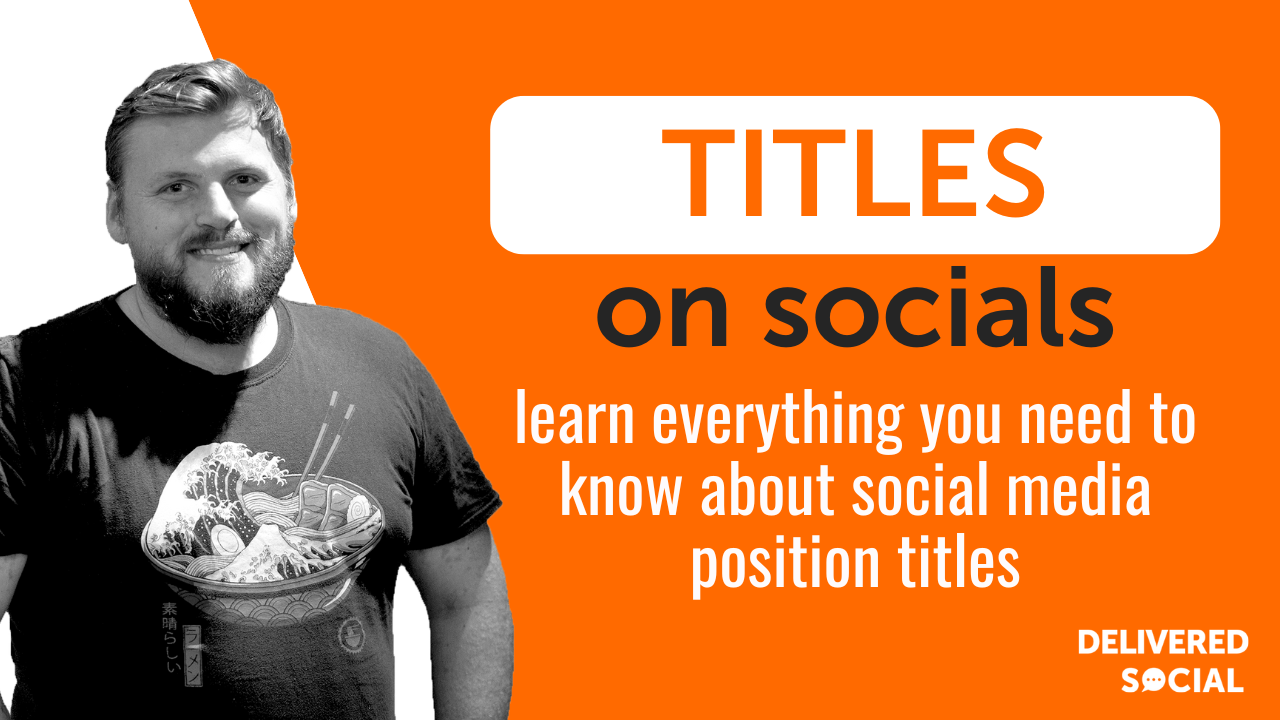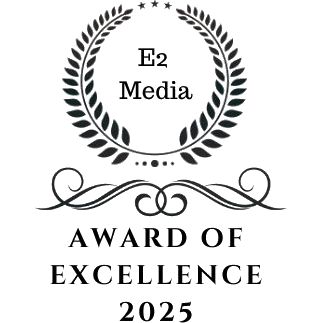
Understanding the titles given to employees on social media within a company is vital for any business looking to establish a robust online presence. Social media has become an integral part of business strategy, and having the right team with the right roles is crucial for success. With an array of social media position titles available today, it can be confusing to know which ones are necessary for your business. However, structuring a social media team with clearly defined roles can help you create an efficient workflow, ensure your social media efforts are targeted, and ultimately drive results.
Social media position titles define the various roles within a team responsible for managing a company’s online presence. Whether it’s content creation, strategy development, or community management, every role plays a significant part in ensuring a business’s success on social media platforms. By understanding these positions and the responsibilities they entail, businesses can make better decisions when building their social media teams.
In this article, we’ll take a look at the most common titles, explain the key responsibilities associated with each role, and guide you through how to choose the right social media roles for your business.
What are Social Media Positions, A Quick Overview
Understanding the range of social media position titles is essential for businesses looking to build a well-rounded team. As social media continues to grow and evolve, so too does the variety of roles available. These roles span from content creation to strategy development, and each position has its unique function in ensuring that a company’s social media presence is effective and engaging.
Common Social Media Roles
-
Social Media Manager
The Social Media Manager is often the person responsible for overseeing the day-to-day operations of a brand’s social media platforms. This position typically involves creating and curating content, scheduling posts, managing interactions with followers, and measuring performance through analytics. A Social Media Manager is the central figure in a business’s social media presence, ensuring that everything runs smoothly. -
Content Creator/Content Strategist
A Content Creator focuses on producing engaging, high-quality content for various platforms, such as Facebook, Instagram, LinkedIn, or Twitter. This content can range from articles and blogs to videos and infographics. A Content Strategist works alongside the content team to ensure that the content aligns with the business’s marketing goals and engages the right audience. Both of these roles are vital for a comprehensive social media content strategy. -
Community Manager
Community Managers are responsible for building and nurturing a brand’s online community. They focus on interacting with followers, responding to comments, moderating discussions, and creating a positive, engaged community around the brand. This role is especially important for businesses that want to build strong, loyal relationships with their customers. -
Social Media Strategist
A Social Media Strategist is responsible for developing the overarching strategy for the brand’s social media presence. This includes identifying the target audience, selecting the appropriate platforms, and creating campaigns that align with business objectives. They work closely with other roles, like the Social Media Manager and Content Creator, to ensure that the content being produced is in line with the company’s strategic goals. -
Influencer Marketing Manager
Influencer Marketing Managers focus on leveraging relationships with influencers to promote the brand. This position involves identifying influencers who align with the brand’s values and target audience, building partnerships, and managing influencer campaigns. As influencer marketing continues to be a powerful tool, this role is becoming increasingly important in the digital marketing landscape.
The Need for Clear Roles
Having clearly defined social media position titles ensures that every aspect of your social media strategy is covered. It allows each team member to focus on their specific strengths, whether that’s content creation, strategy, community management, or analytics. Additionally, clear roles help prevent overlap and ensure that your team is working efficiently towards shared business goals.
At Delivered Social, we assist businesses in defining the right roles for their teams based on their specific needs and objectives. We work with companies to create customised social media structures that optimise performance and drive growth.

Key Social Media Roles and Their Responsibilities
Each social media position title plays an important role in executing a business’s social media strategy. From managing the day-to-day operations to creating high-quality content and driving engagement, each role is vital for a brand’s success on social media. Below, we will break down the responsibilities of some of the key social media positions that businesses often employ to manage their social media presence effectively.
Social Media Manager
The Social Media Manager is often the backbone of any social media team. They are responsible for overseeing the business’s entire social media strategy, ensuring that all platforms are running smoothly and that the content aligns with business goals. Their key responsibilities include:
-
Managing social media accounts across multiple platforms (LinkedIn, Facebook, Instagram, etc.).
-
Scheduling posts and ensuring they go live at optimal times.
-
Engaging with the community by responding to comments and messages.
-
Analysing performance metrics and adjusting strategies to improve engagement.
-
Collaborating with other teams to ensure brand consistency and alignment.
The Social Media Manager plays a critical role in ensuring that the brand’s voice remains consistent and that all content is posted according to the strategy.
Content Creator/Content Strategist
A Content Creator is responsible for producing engaging and creative content, including articles, videos, images, and infographics, to share on various social media platforms. Their role is crucial in creating content that not only attracts attention but also adds value to the target audience. Some key responsibilities of a Content Creator include:
-
Creating and curating relevant content based on business goals and audience preferences.
-
Developing multimedia content, such as videos or infographics, to increase engagement.
-
Working with the Social Media Manager and Strategist to ensure content aligns with the brand’s voice and strategy.
-
Tracking the performance of content to evaluate its effectiveness and making necessary adjustments.
The Content Strategist works alongside the Content Creator, focusing on long-term content planning and ensuring that the content aligns with the company’s objectives. They play an essential role in mapping out the content calendar and ensuring consistency.
Community Manager
A Community Manager is essential for maintaining relationships with a brand’s online audience. They ensure that followers feel heard, valued, and engaged with the brand, which is crucial for building loyalty and trust. Responsibilities include:
-
Monitoring social media channels and responding to customer inquiries, comments, and messages.
-
Creating and participating in conversations to keep followers engaged.
-
Managing social media communities and building relationships with influencers.
-
Tracking customer feedback and reporting any issues that may need attention.
The Community Manager is the voice of the brand in the social space, ensuring the online community remains active and positive.
Social Media Strategist
The Social Media Strategist is the mastermind behind the overall social media plan. They focus on setting up campaigns, creating strategies, and ensuring the business is targeting the right audience. Their key responsibilities include:
-
Developing the long-term strategy for social media channels.
-
Identifying key metrics and setting measurable goals for social media campaigns.
-
Conducting market research to understand industry trends and audience preferences.
-
Coordinating with other departments to ensure that social media strategies align with overall marketing campaigns.
The Social Media Strategist ensures that all efforts are focused on achieving specific business objectives and that the content remains relevant to the target audience.
How to Structure Your Social Media Team with the Right Titles
Creating an effective social media team involves more than just hiring a group of people. It requires strategically structuring roles with the right social media position titles to ensure that each team member’s responsibilities are clear and aligned with the business’s overall goals. By assigning clear roles and responsibilities, businesses can ensure that their social media strategy is well-executed and that each team member can contribute to the business’s success.
Start with Clear Goals
Before deciding on social media position titles, it’s important to define your business’s goals. Are you looking to increase brand awareness, drive website traffic, or generate leads? Understanding your goals will help you identify the key roles needed to meet those objectives. For example, if your goal is to generate more leads, you may need a Lead Generation Specialist or a Social Media Strategist who focuses on targeting and converting prospects.
Define Each Role and Responsibility
Once you’ve established your business goals, you can start defining the specific roles your social media team will need. For instance, your team may require a Content Creator for producing regular content, a Social Media Manager for overseeing day-to-day activities, and a Community Manager for engaging with followers and building relationships. Having clear titles and responsibilities for each role helps avoid confusion and ensures that your team works efficiently towards shared goals.
At Delivered Social, we assist businesses in defining the right roles for their teams based on their specific needs and objectives. We work with companies to create customised social media structures that optimise performance and drive growth.
Collaborate Across Roles
While it’s important to have defined roles, it’s also essential that team members collaborate across functions. For example, the Content Creator should work closely with the Social Media Manager to ensure content is in line with the brand’s overall messaging. Cross-functional collaboration helps create a cohesive strategy that maximises engagement and aligns with business goals.

How to Choose the Right Social Media Position Titles for Your Company
Choosing the right social media titles for your business is crucial to ensure that the roles align with your marketing objectives and strategy. With so many different roles available, it can be difficult to know which positions to prioritise. However, by understanding your business goals and how social media fits into your marketing efforts, you can effectively build a team that supports growth and drives success.
Understand Your Business Goals
The first step in choosing the right social media positions is understanding your business goals. What do you want to achieve with your social media strategy? Are you focused on growing brand awareness, driving traffic to your website, generating leads, or improving customer engagement? Your business goals should determine the type of social media roles you need to fill.
For example, if your goal is to increase brand visibility, you may need a Content Strategist or Community Manager to help drive engagement. If lead generation is your focus, you may require a Social Media Strategist who specialises in creating campaigns that convert prospects into customers. By aligning your social media positions with your business goals, you ensure that each role contributes to achieving those objectives.
Assess Your Team’s Current Skills
If you already have a social media team in place, assess their strengths and weaknesses. Are there any gaps in your team that need to be filled? Perhaps you need more creative content creators or someone with a deeper understanding of analytics. Understanding the strengths of your current team will help you decide which roles to prioritise when building your team.
Tailor the Roles to Your Industry
The social media positions you need will depend largely on your industry and target audience. For example, businesses in the B2B sector may require a LinkedIn Manager or Lead Generation Specialist, while those in the consumer goods space may benefit from hiring more content creators and a Community Manager to engage with a broader audience. Tailoring your social media position names to your industry ensures that your content is relevant and resonates with your target market.
At Delivered Social, we specialise in helping businesses identify and create the right social media position titles based on their industry, goals, and resources. We ensure that businesses have the right mix of roles to implement a successful social media strategy.
FAQ: Maximising LinkedIn Networking with Following
How often should I post on LinkedIn to generate leads?
The ideal frequency of posting on LinkedIn depends on your audience, but consistency is key. Posting 2-3 times a week is generally a good starting point to ensure your content stays visible without overwhelming your followers.
How do I find the right people to follow on LinkedIn?
The first step is to define your target audience. Identify the key industries, job titles, and companies that align with your business. Use LinkedIn’s search features to find professionals who match these criteria and start following them. Engage with their content to build relationships and increase the likelihood of them following you back.
Should I follow everyone in my industry?
It’s not necessary to follow everyone in your industry. Be strategic in your approach—focus on following professionals who can genuinely contribute to your business network—whether they are potential clients, industry influencers, or partners. Quality is more important than quantity when it comes to building a network that will yield valuable leads.
What should I include in my LinkedIn message to encourage engagement?
When reaching out to someone new, always personalise your message. Instead of a generic greeting, mention something specific about their profile, such as a post they’ve shared or a recent achievement. A personalised message builds rapport and increases the chances of starting a meaningful conversation that leads to long-term engagement.
Interested In Working Together?
Introducing Delivered Social. We’re The Most-Rated Digital Agency In Surrey & Hampshire – We’ve Got To Be Doing Something Right.
Delivered Social is a digital marketing agency with one mission—to help businesses grow. We’re famous in Guildford and Portsmouth for our social clinics. We believe in free advice. We build lasting relationships because our team prides itself on being helpful, which our clients appreciate.
If you are looking for a new website or an agency to manage your social media presence, we can help.
If you need something slightly different, here's a super handy list of all our services, or you can always email us.























